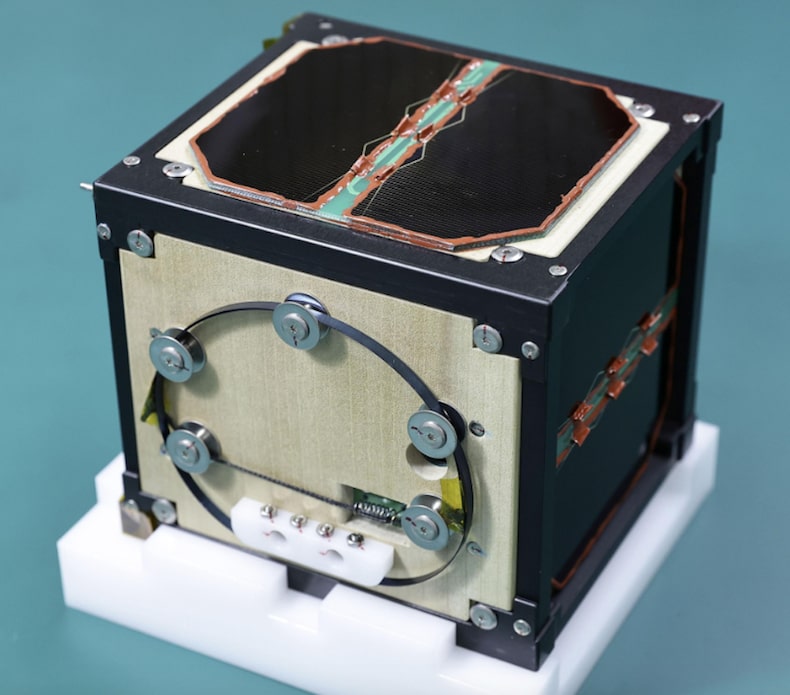LignoSat, the first wooden satellite, was made using a Japanese technique that uses no screws or adhesives, representing an important step in the construction of space structures.
The first satellite of the world built with drink has officially left for space aboard a SpaceX rocket.
It is about LignoSat a project promoted by Kyoto University (Japan) in collaboration with the forestry company Sumitomo Forestry, which aims to test the strength and durability of wood in the space environment .
What was the first wooden satellite like?
Made by Japanese researchers, LignoSat is a tiny satellite that measures just 10 centimeters on a side, weighs about 900 grams and is equipped with solar panels.
The construction of the object is new for several reasons. It is made with honoki what is a type of magnolia wood originating from Japan that is frequently used to make sword sheaths, as described by Reuters. After spending 10 months experimenting on the International Space Station (ISS), researchers realized that this material was best suited for the object.
On the other hand, the LignoSat panels, made of honoki, have a thickness of between 4 and 5.5 millimeters and have been assembled with a Japanese technique that uses no screws, adhesives or welding which also represents an important step in the construction of spacecraft.

This experimental satellite also has aluminum structures and sensors that will allow researchers to know the reactions of wood to the space environment during its orbit around the Earth.
How did the launch of the wooden satellite take place
The Japanese satellite was launched in early November from NASA’s Kennedy Space Center in Florida aboard a SpaceX Falcon 9 rocket.
Sumitomo Forestry assured the AFP agency that the launch was “successful”. LignoSat is expected to reach the ISS and be put into orbit almost 400 kilometers above Earth.
The device will orbit the Earth for six months and then, when it re-enters the atmosphere, it will burn up completely.
This is because, usually, when satellites have to return to the atmosphere, there is a fall of metal particles, which negatively affects the environment and telecommunications. But if the wooden appliance burns, these harmful particles will not be generated and the contamination level will be much lower.

Why it’s important to test wood in space
Researchers at Kyoto University chose to build LignoSat out of wood for a very specific reason: They hope that this less polluting material can replace certain metals used to create spacecraft.
For this reason, this mission aims to verify the potential of wood in the extreme conditions of space.
“With wood, a material that we can produce ourselves, we will be able to build houses, live and work in space forever” pointed out Reuters Takao Doi, researcher at Kyoto University.
While Koji Murata, professor of forestry sciences at the same university, points out that “airplanes at the beginning of the 20th century were made of wood” and that “it should also be possible to build a satellite out of wood”.
According to the researcher, wood could be more resistant in the space environment than on Earth, because there is no water or oxygen that could deteriorate it.
Source: Latercera
I’m Rose Brown , a journalist and writer with over 10 years of experience in the news industry. I specialize in covering tennis-related news for Athletistic, a leading sports media website. My writing is highly regarded for its quick turnaround and accuracy, as well as my ability to tell compelling stories about the sport.


